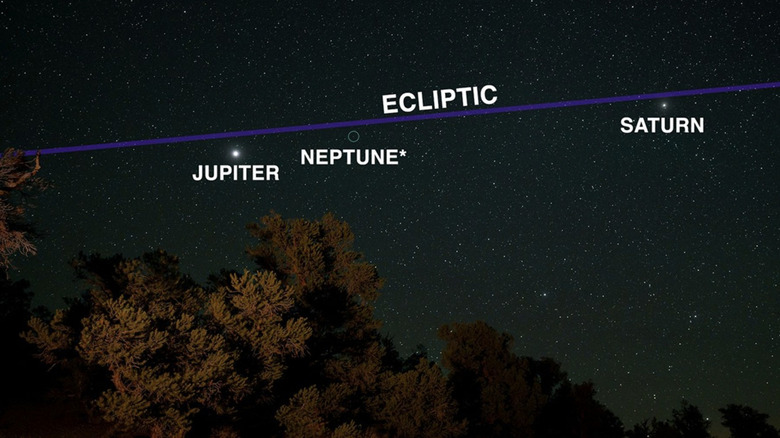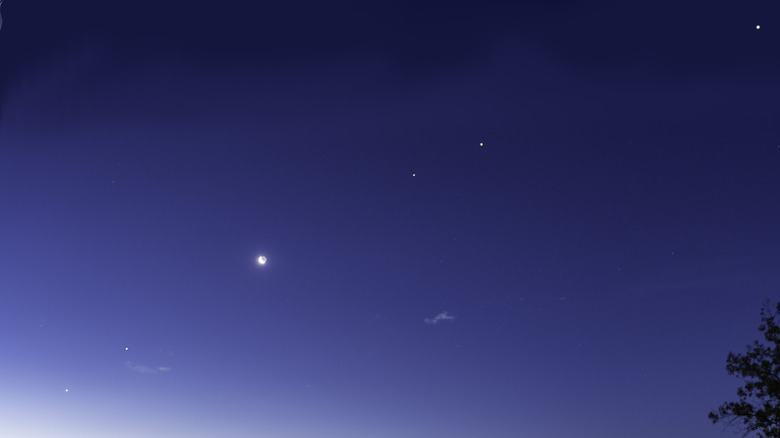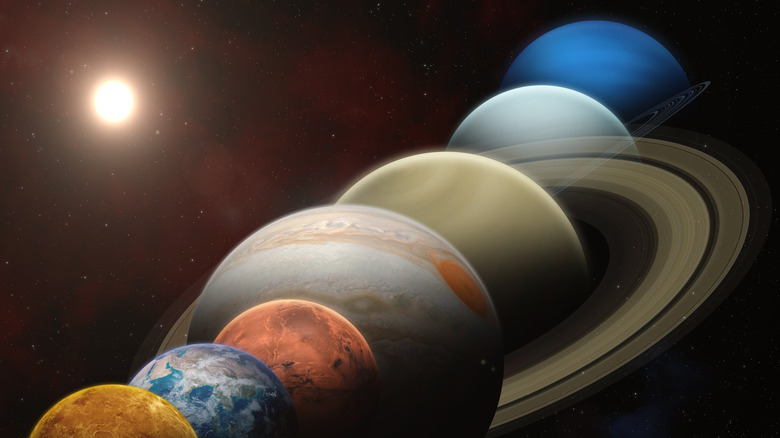What Exactly Is A 'Planet Parade' And How Often Do They Happen?
In early 2025, the world observed a rare planetary parade event that won't be seen again until 2040. On the last day of February, seven planets appeared to align at the same time, creating a rare scene in the night sky. The event is broadly called a planetary parade. However, technically, it's not a parade as all the planets are spaced apart unevenly and moving at different speeds.
Nevertheless, being able to spot seven of them in the night sky is a special event and elicits that moniker. Interestingly, it's not an astronomical term, but more of a colloquial designation. As per NASA, when you can see four, five, or more planets in the night sky, it is often referred to as a planetary parade or planetary alignment.
Most of the time, it's just the view of multiple planets close to each other. On a special few occasions, they appear to align, almost as if they are all coursing the same path. The phenomenon is rare for our eyes because we are observing their movement from within the plane of reference, almost like watching other race cars move on a flat track as you finish your own lap.
In astrophysics, it's just a periodic event where multiple planetary bodies sharing a common star appear collectively to an observer's perspective. However, as not all planets are visible to the naked eye during a parade due to their sheer distance, you will need a telescope to see them, and proper knowledge of where to look.
How to view a planetary parade
While watching a planetary parade, if you don't have access to a telescope or binoculars, you can still identify a few of the far-out planets using tricks. Dr. Jeff Rich, a member of the team at Carnegie Science, notes that you can spot Mars by its reddish hue. Jupiter, on the other hand, appears yellowish.
A helpful fact about planets is that they don't twinkle, unlike stars, so it's pretty easy to identify which of the shining items in the night sky are stars, or otherwise. "Uranus and Neptune, especially Neptune, are too faint to see with the naked eye," Rich explains.
So, how rare are planetary parades? Rich notes that only in 2034 are we going to be able to again see a parade where five planets are visible to the naked eye. Bill Janesh, senior instructor of astronomy at Case Western Reserve University, explains, Jupiter remains on the same side of the solar system (from our perspective) for 2.5 years, before switching sides for an equal spell. "Once Saturn switches sides in about 15 years, we'll have to wait another 10+ years for it to be visible in the same night sky as Uranus and Neptune," notes Janesh.
The alignment traces back to the origin of planetary systems
If you treat the planets like dots and connect them, they would broadly appear to follow a curved line on the horizon. That line is called the ecliptic, and it looks similar to the arc-like path the Sun charts each day in the sky. But why do planets seem to follow the path of the Sun's movement?
"This is because the planets are at low inclination, so they're in line with the plane of the sun. And if you were to zoom out and look at the orbits of the planets, they wouldn't actually be in a line — they'd just be on the same side of the sun from our perspective on Earth," explains an astrophysics expert at Michigan State University.
The arc alignment is no coincidence, because all planets orbit the sun in roughly the same plane, like a disc, known as the ecliptic or ecliptic plane. If you study the formation of solar systems, all planets originate from a disc around a star, which happens to be the Sun, in this case.


